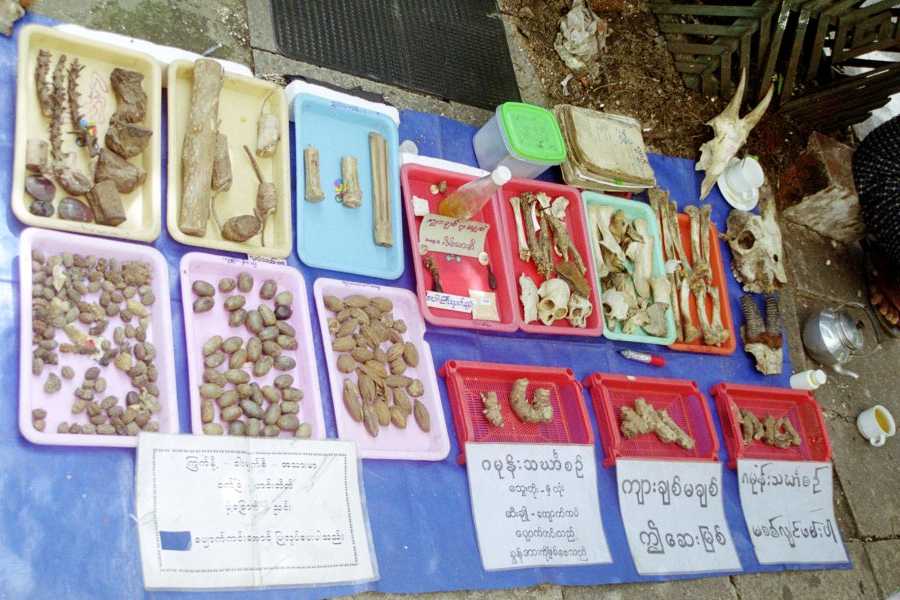 Medicine . . .
Medicine . . .My girlfriend, Arumi, tells me one sees the wares of a 'Medicine Man' quite often throughout Asia.
Whether they sit by the roadside, or whether they own a shop in a building, one will see very similar items being sold around Asia.
The “pellets” you see here are in fact different types of roots such as ginger or some unknown vegetable, that have been sun or air dried.
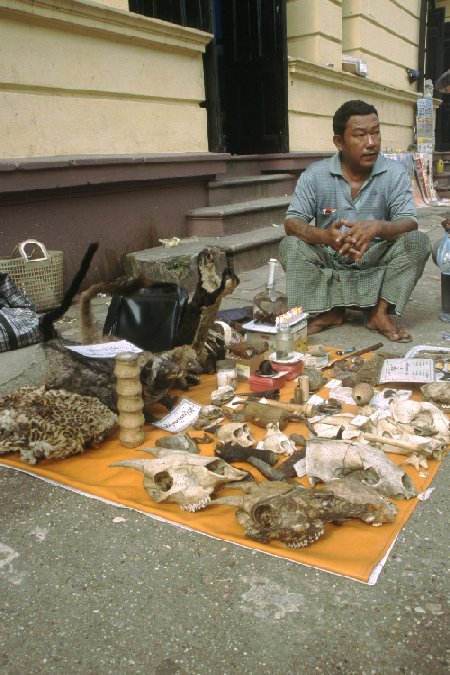
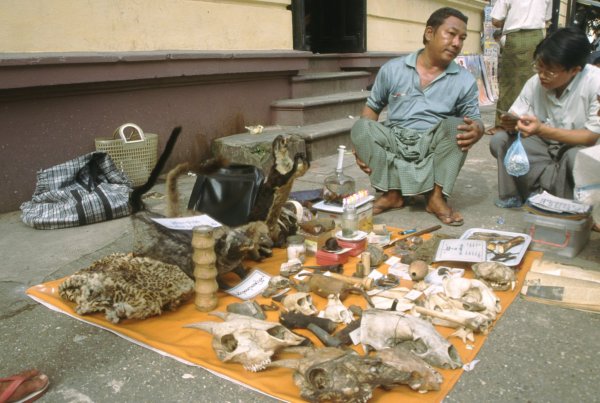
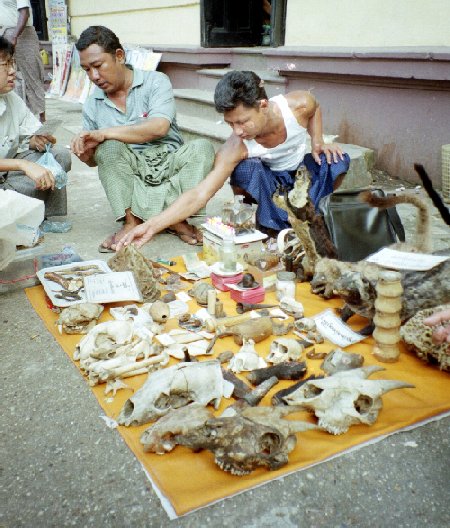
You will see the antlers of various animals such as deer or even rhino. There are also skulls from different animals - some of these animals may be endangered species, but somehow you will see them being sold in these markets.
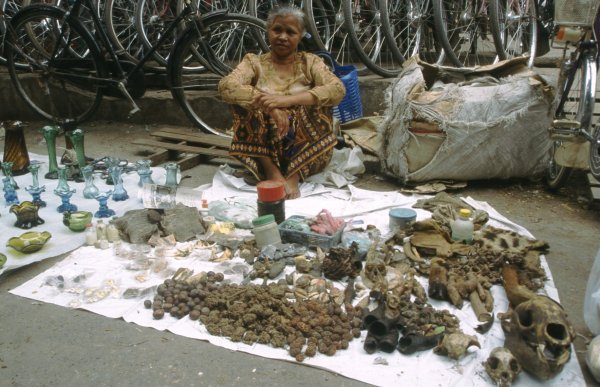
These skulls are definitely not being used as “trophies” around the house!
The Burmese, like many Asians, believe in using very 'natural' remedies to cure common ailments.
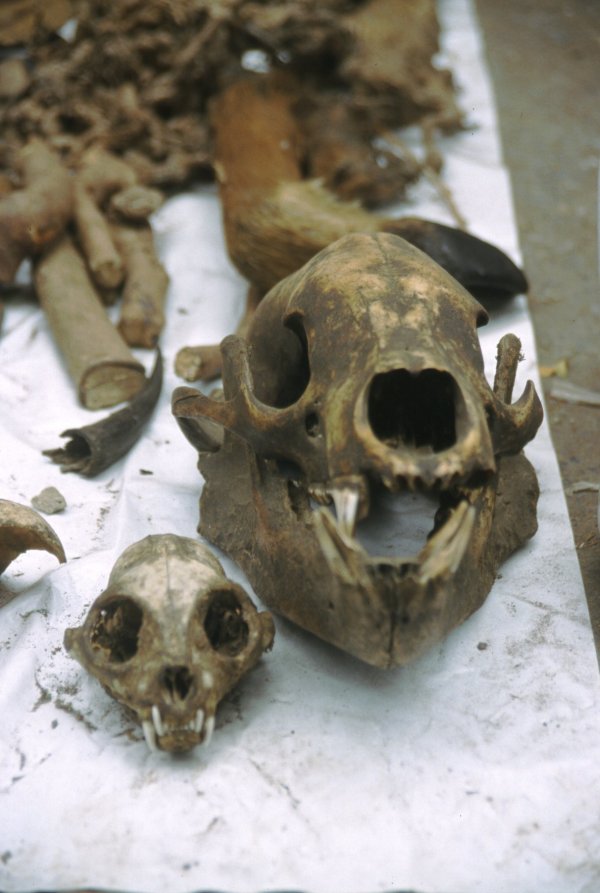
A Medicine Man may not necessarily be a “doctor” according to western standards - that means he may not have a university degree.
However, a Medicine Man, may be what we know as “witch-doctors”. Some of the remedies they know are very natural and useful.
Unfortunately, not all of these remedies work. Around Asia, you will see shops or Medicine Man selling items like tigers' paws and skulls, or ground ivory tusks. Many of these are sold as cures or enhancements for the sex life.
In Burma, there is virtually no wildlife left.
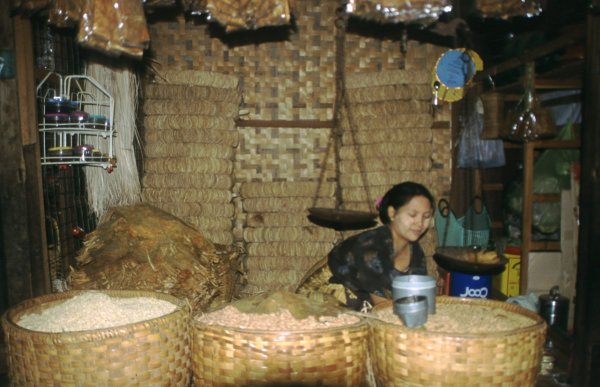
You will even find that even tobacco is sold naturally.
Not in cigarette form, but in leaf form! The laws in Burma are not quite the same as they are here. Marijuana is also sold very freely.

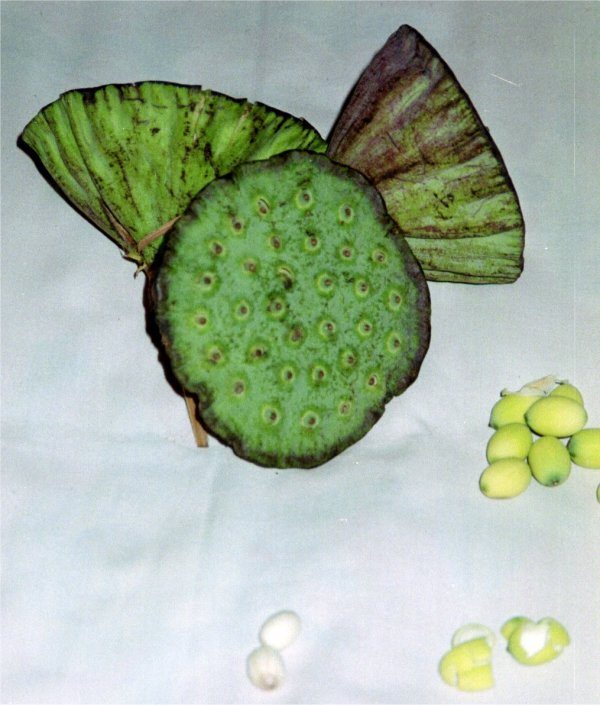 Lotus Fruit . . .
Lotus Fruit . . .
Quite often in Asia, you may see lily pads floating on the water. In fairy-tales, you hear about frogs sitting on a lily pad.
You will be amazed to associate that this fruit here, comes from the flowers/plant growing out of the water near the lily pads.
The yellow seeds come from the flower itself. The seeds are used often in many Asian desserts, and said to promote better blood circulation.
While, the root of the lotus plant is also a delicacy. It is white when cooked, and has a crunchy texture, similar to that of the water chestnut. Mainly used in savoury meals, although used as a dessert as well.
Personally, I think it is too much hassle retrieving the fruit! *smile*
Created: 31 Oct 2001